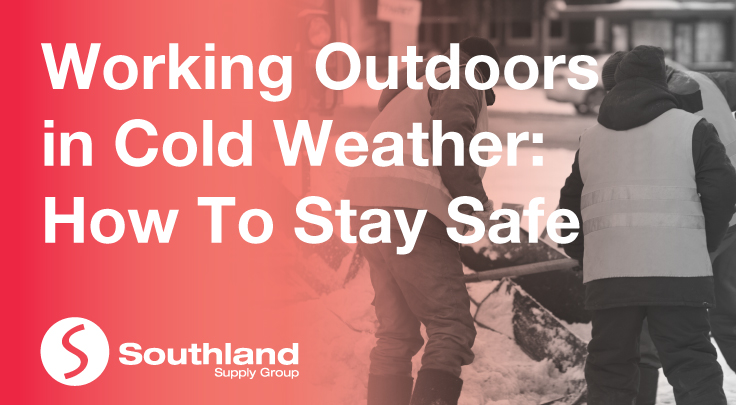
As the colder months approach, outdoor workers and their employers must be aware of the risks associated with working in cold weather and take measures to mitigate those risks. Winter weather can expose outdoor workers to frostbite, hypothermia, and cold stress, all of which can be fatal.
Who is at risk?
Outdoor workers in a variety of professions, including sanitation workers, police officers, farmers, snow cleanup crews, and construction workers, are all at risk of cold-related illnesses and injuries. Certain medications, poor physical conditions, and pre-existing medical conditions such as diabetes, high blood pressure, or heart disease can increase workers' vulnerability to cold stress.
Taking measures to stay healthy is important, especially when working in the cold. Follow these top 5 tips to keep you safe and warm when working in the cold:
1. Dress in Layers - The first and most important step to staying safe when working outdoors in cold weather is to dress appropriately and wear the right protective clothing. It's essential to dress in layers so that you can adjust your clothing as your body temperature changes throughout the day. Start with a moisture-wicking base layer to keep sweat away from your skin, then add a mid-layer for insulation, and finally, a waterproof outer layer like rain jackets to protect against wind and precipitation.
2. Protect Your Hands, Feet, and Head - When working outdoors in cold weather, your hands, feet, and head are the most vulnerable parts of your body. It's important to wear insulated gloves and waterproof boots to protect your hands and feet from frostbite and hypothermia. Additionally, wear a hat or beanie to protect your head from heat loss.
3. Wear insulated boots - Insulated boots paired with warm socks can keep your feet warm and safe. These types of boots also keep your feet dry because they do not allow any moisture or snow into the boot, and wool socks are better than cotton socks because they retain heat even when wet.
4. Be Aware of Hypothermia and Frostbite - Hypothermia and frostbite are two serious conditions that may occur when working outdoors in cold weather. Hypothermia happens when your body temperature drops below normal, and frostbite happens when your skin and underlying tissues freeze. Symptoms of hypothermia include shivering, confusion, and slurred speech, while symptoms of frostbite include numbness, tingling, and bluish skin. If you experience any of these symptoms, make sure to seek medical attention immediately.
5. Take Frequent Breaks - Breaks are necessary for any working environment but become increasingly important when working in extremely cold conditions. Break time gives your body a chance to rest and warm up by going inside or finding a warm shelter. If you start to feel cold, take a break immediately and warm up before continuing your work.
Working outdoors in cold weather requires proper preparation and precautions. By following the above tips, you can stay safe and healthy while working outdoors in cold weather. Remember to dress in layers, protect your hands, feet, and head, stay hydrated, take frequent breaks, be aware of hypothermia and frostbite, and check the weather forecast before heading out. For a complete range of personal protective equipment when working in cold weather, visit Southland Supply Group at https://www.southland.com.au/




